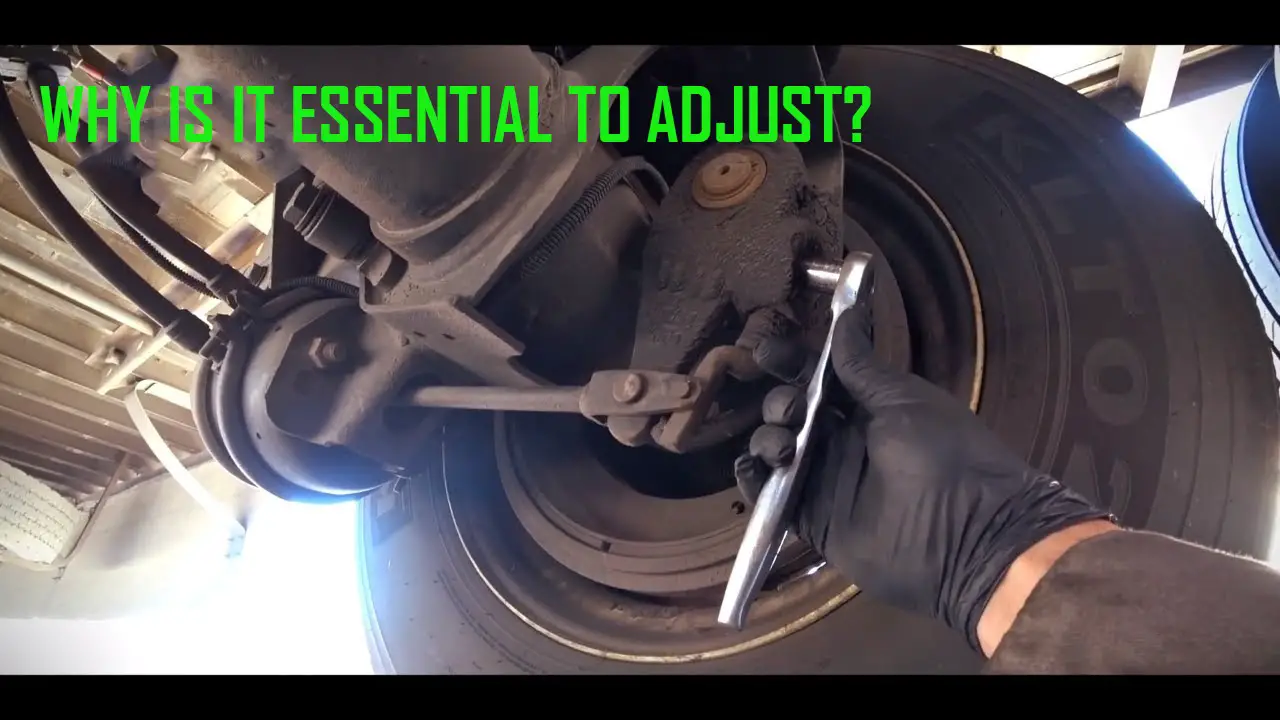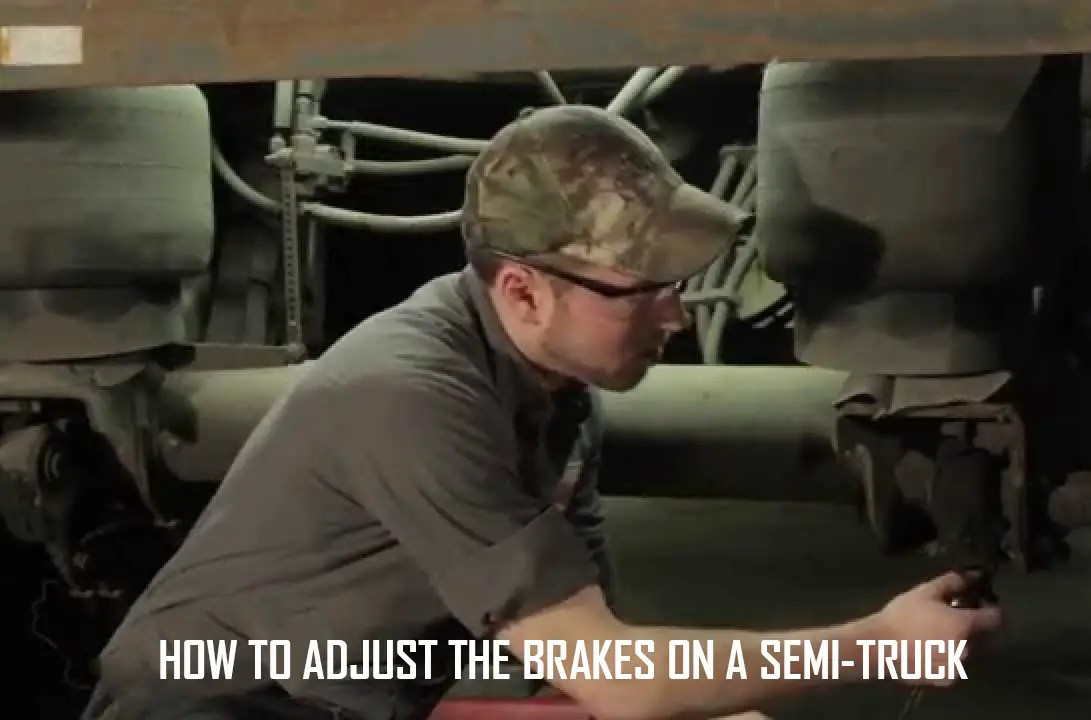How to Adjust the brakes on a Semi-Truck
Have you ever wondered how to adjust the brakes on a semi-truck? We’ve got answers.
Asking this question is not always easy because there are many different ways it can be done, and they each have their own set of tools and procedures.
This guide will go over all the standard methods to not get stuck in another one of those confusing moments when trying to figure out which way would be best for your project’s needs.
This guide will provide the information, tools, and procedures needed to adjust the brakes on a semi-truck properly.
Why is it essential to adjust the brakes on a semi-truck?

Semi-trucks have a lot of weight and momentum, so the brakes must be adjusted
appropriately to avoid accidents.
Brake adjustment must be inspected regularly to ensure that the brakes are working correctly and can stop the truck in time. A step-by-step procedure for measuring the applied brake stroke will help determine when your brakes need re-adjusted.
Brake stroke indicators can also help you track how much brake travel is left before you need to adjust the brakes again.
You should also adjust your brakes if the automatic slack adjusters are not adjusting them properly. This is an important safety measure to prevent brake failures and runaway crashes. Additionally, it is the law of the land that drivers are required by law to inspect their brakes and perform necessary maintenance to keep everyone safe on the road.
How often should the brakes be adjusted on a semi-truck?
Keeping the brakes on a semi-truck in good working order is important. The brakes should be checked and adjusted regularly. The brakes may need to be adjusted more or less often depending on how often the truck is used.
If the truck is used for heavy hauling or frequently stops and starts, the brakes must be adjusted more often. A good rule of thumb is to check the brakes every six months. In the event that they start to show signs of wear, they should be replaced or repaired as soon as possible.
Brakes are an important safety feature on a semi-truck and should be given regular attention to ensure they are in good working order. Regular maintenance schedules can help avoid costly repairs and keep your truck running safely for years to come.
How to adjust the brakes on a semi-truck?

Steps to Adjust the Brakes on a Semi-Trucks
1. Chocking the Wheels
Before starting any work on the vehicle, it is vital to ensure that the tires are secured to prevent them from rolling away while working on the car.
Chocking the wheels involves placing blocks under the front and rear axles of the vehicle.
You can use concrete blocks or wood blocks.
If you’re doing any work on the vehicle’s suspension system, you may want to remove the wheels to avoid damaging the axle.
2. Locate the Brake Adjustment Screws
Locating the brake adjustment screws is very simple.
All you have to do is look for two small holes near the wheel’s center.
These holes are usually found on the inside of the wheel well.
3. Turn the Brake Adjustment Screws Counter Clockwise
Turning the brake adjustment screws counterclockwise loosens the brakes.
Turning the screws clockwise tightens the brakes.
4. Pump the Brake Pedal
Pumping the brake pedal ensures that the brakes are fully engaged.
5. Check the Brakes
After pumping the brake pedal, check to see if the brakes are still engaging.
You must repeat step 3 until the brakes engage if they aren’t.
6. Tighten the Brake Adjustment Screws
Once the brakes are engaging, you can tighten the brake adjustment screws.
7. Drive the Vehicle
Drive the vehicle around to ensure that the brakes are functioning correctly.
If you’re not comfortable adjusting the brakes on your own, it might be time to hire a professional mechanic.
What are the consequences of not correctly adjusting the brakes on a semi-truck?
If you do not adjust the brakes on your semi-truck correctly, there are a few consequences that you should be aware of.
First, your trailer may become overloaded and result in an unsafe stop.
Second, the stopping distance of your truck will be significantly increased, which could lead to accidents.
Finally, the heat generated by the friction of the brake drums can cause damage to the drums themselves and other parts of the braking system.
It is, therefore, very important to take the time to adjust your brakes properly to avoid any potentially dangerous situations.
HOW TO ADJUST THE BRAKES ON A SEMI-TRUCK FAQs:
What tools are necessary to adjust the brakes on a semi-truck?
In order to adjust the brakes on a semi-truck, there are a few necessary tools. The first tool that is needed is a lug wrench. This will be used to loosen the lug nuts so the wheels can be removed.
The following tool that is needed is a jack. This will be used to lift the truck so the wheels can be taken off. Finally, a crescent wrench is necessary to adjust the brakes themselves.
Adjusting the brakes on a semi-truck with these three tools is fairly simple. First, use the lug wrench to loosen the nuts on all wheels.
Next, use the jack to lift the truck and remove all of the wheels. Finally, once the wheels are off, use the crescent wrench to adjust the brakes as necessary.
What are some tips for adjusting the brakes on a semi-truck?
If you’re a semi-truck driver, you know that proper vehicle maintenance is essential to keeping it running smoothly. One important aspect of maintaining your semi-truck is adjusting the brakes. Here are some tips on how to adjust the brakes on a semi-truck:
- First, check the air pressure in the brake system. The recommended pressure is between 60 and 90 PSI.
- Next, check the condition of the brake pads and shoes. If they are worn down, they will need to be replaced.
- Then, adjust the tension on the brake drums. This can be done by loosening or tightening the bolts that hold the drums in place.
- Finally, test your truck to ensure the brakes are working properly.
How can I tell if my brakes need to be adjusted on my semi-truck?
If you’re unsure whether or not your brakes need to be adjusted, you can check a few things.
First, look at the brake shoes. If they’re excessively worn, it’s time for an adjustment.
You should also check the brake drums. If they’re cracked or damaged, they need to be replaced.
Finally, check the brake lines. If they’re leaking, you’ll need to have them repaired or replaced as soon as possible.
Is it difficult to adjust the brakes on a semi-truck?
Most people don’t know how to adjust the brakes on a semi-truck. It can be challenging if you don’t know what you’re doing.
There are different types of brakes, and each style has its adjustment process. The most important thing is to ensure the brakes are correctly adjusted before you start driving. If they’re not, it could be dangerous.
What are the different types of brakes available on a semi-truck?
Four types of brakes are available on a semi-truck: air brakes, hydraulic brakes, electric brakes, and engine brakes.
Air brakes are the most common type of brake used on a semi-truck. They use compressed air to apply pressure to the brake pads, slowing down the truck. Hydraulic brakes work similarly, but instead of using air, they use hydraulic fluid to apply pressure to the brake pads.
Electric brakes are less standard than air or hydraulic brakes, but they are becoming more popular due to their increased efficiency.
Electric brakes use an electric motor to apply pressure to the brake pads, slows down the truck. Engine brakes are used to slow down the truck by using the engine to resistance against the wheels.
Conclusion
Adjusting the brakes on a semi-truck is a relatively simple process that can be completed in a matter of minutes. Using the information provided in this article, you will be able to ensure that your brakes are properly adjusted and functioning correctly. With proper maintenance, your brakes should last for many years to come.
